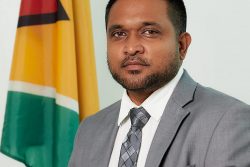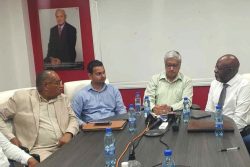“Necessity is the mother of invention,” is the well-worn adage which we have heard in perpetua, and here in Guyana we are well versed – both by imposed regulations, like banning and force of tough circumstances: lack of foreign exchange – in how innovative we can be when our backs are against the wall.
In the former instance, despite the initial hue and cry, or rather excessive howling, by the general populace against these (then considered draconian) measures by the government of the time, when a substantial list of food items were banned during the early/mid 70s, we managed to survive, whilst the innovative quickly adopted and thrived on the situation. While the others were bemoaning the disappearance of sardines and salted mackerel, entrepreneurs seeing a window of opportunity, were quickly producing salted Banga Mary and increasing the supply of fresh fish. With the Irish potato no longer available, we acquired the taste for locally grown yams and eddoes.
As the 80s dawned and the crunch of limited amounts of foreign exchange took its toll, mechanics and other tradesmen were compelled to be resourceful. Worn parts, previously considered no longer serviceable, were modified and adapted for longer usage. One standout local artisan, Frank Gomes of Tucville took the whole process to a higher level, and started producing cables for cars. A trip to his nocturnal operation was sure to leave the visitor nonplussed. On presenting a damaged cable, one would receive a spontaneous lecture on how many cables they were in cars – accelerator, clutch, speedometer, hand brake, releases for the bonnet, trunk and gas cap – whilst he flipped through his well-organised index cards to locate the exact specifications of one’s dilemma. If no such record was located, a thorough examination of the cable in question was performed with a series of measuring tools, the details of which were carefully recorded on a new card, and a time was given for the customer to return – if he was busy, which he invariably was – to uplift a replacement, which only differed, in most instances, from the foreign manufactured product by its lack of colourful packaging.
When the going got even tougher in the early 80s – in addition to the previously mentioned, there were electricity and water shortages – the brain drain kicked into an even higher gear. If one could not get to the preferred promised lands of the USA, Canada and the UK, other destinations were explored: the Caribbean, Europe, Venezuela, French Guiana, Suriname. Every avenue was pursued: student visas, visitor visas, arranged marriages, work permits, holi-stays. For the unconnected, a relatively new industry was spawned – ‘back-track’. This innovative form of travel, more often than not, facilitated by someone else’s passport, was the absolute last resort, the sign of ultimate desperation. There were thousands of desperate people, many of whom succeeded via this mode of exit.
Whilst there have been improvements in some areas, social decay continues unabated, and a most difficult developmental problem, ingrained racism, its flames fanned continuously by the powers that be, is sinking its tentacles of despair deeper into the minds of our society. Just when and how do we plan to tackle this ever-expanding elephant in the room?
Our Commonwealth cousin, Singapore, is a similar melting pot of four races, and whilst the dilemma has not been completely eradicated (racism will always lurk in the minds of some, regardless of location), it has made tremendous strides in that direction. The late Prime Minister Lee Kuan Yew’s bold government reforms were very instrumental in resolving the heated problem. Three initiatives were implemented by the Singapore government: public housing, education and national service. In the first instance, with 80 percent of Singapore’s population living in public housing, the Housing and Development Board ensures that racial quotas are enforced to prevent the development of racial enclaves. The National Education programme fosters a Singaporean identity and educates students on its tumultuous past due to race riots. All Singaporean males are conscripted for two years to serve in the military, police or civil defence force, where they interact with all races. Singapore may not be perfect, but it is certainly making a go of it.
Will there ever be similar reforms or actions here? When will they commence? When the oil is finished and the only beneficiaries have been the chosen few? Is this what it will take to awaken a nation which has fallen silent? Have we become scared of our own shadows and withdrawn into the far reaches, too afraid to speak out? Or do we prefer to remain gullible to the perpetuation of lies instead of confronting the truth?
The time for regrets and inaction have long passed, an innovative solution needs to be sought. Do the current powers have either the interest or inclination to be part of this conversation? Or will they continue to do everything in their power to discourage any form of its blossoming? The sham of perpetual rhetoric and constant stalling on the subject, including the approaches to constitutional reform, is wearying.
It has become clear that the leaders and implementers of bridging this chasm in our society will not be the elders, but rather the young and innovative, who, appalled at the learned behaviour handed down from generation to generation, will reject this cursed legacy and myopic approach. What we have failed to resolve as a nation, in almost two generations of Independence, we now have to look to our youth to tackle forthwith.
Whomever or whichever group is going to take the bull by the horns needs to step forward now. As history has taught us, deep-rooted problems require a lot of time and effort; they do not disappear overnight. Unless there is an innovative approach to this divide and rule syndrome, the cycle will continue, until weakened from constant infighting.





